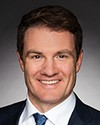Thank you, Mr. Chair.
Suffice it to say that it's frustrating to hear the reluctance on the part of the auto manufacturers. I sincerely hope that this federal government follows through on its promise to bring in mandates for production to get those vehicles onto lots so people can buy them.
I wanted to direct my next questions to Mr. Miller, who's been sitting here patiently listening to all this testimony about electric vehicles, which is probably not super-relevant to the port of Vancouver, although I know it is a major gateway for both imported and exported vehicles.
My question is around the Roberts Bank T2 expansion. This is a very controversial expansion in the estuary of British Columbia's most significant wild salmon river. There was a proposal for industrial development in the estuary of the Skeena River, the second-biggest wild salmon river in B.C., and it also saw widespread opposition. In the case of the Fraser, we've already seen 70% of the estuary impacted by industrialization. We have major problems when it comes to killer whales, wild salmon and all of these things. I understand that scientists have come out with very serious concerns about this expansion.
The port has promised to offset the impact on habitat by building new habitat elsewhere, but we know that this approach is very problematic. In fact, a 2016 study said that of other initiatives to offset habitat loss in the Fraser estuary, only 30% of them functioned ecologically over time. Even in those examples, the number of native species had declined significantly.
In light of this, how are we to trust that the plan that the port has put forward for this expansion will not result in serious impacts on things like migratory birds, shore birds, killer whales, chinook salmon and the other species that have been highlighted, given the situation we're in with that vital ecosystem?

